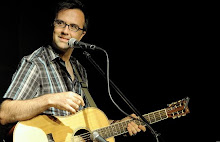In situations where two guitarists are in a band or on a pickup gig, it is often the case that one player is the designated "lead guitarist" and the other is the "rhythm guitarist." Much of the time, the rhythm guitarist is relegated to chord strums out of necessity, not choice. This is sometimes due to the demands of singing. John Lennon played strict rhythm in the early days of the Beatles, only breaking out solos on later recordings like "I Want You (She's So Heavy)" and "Get Back." His rare solos are not bad at all, but he clearly did much more singing than George Harrison, which would necessitate a clear division of lead guitar labor. Even Bryan Adams has been holding back all of these years, save for rare moments. But more often it's a lack of single-note fluidity that places a guitarist in the rhythm camp. In a way, it's a shame that rhythm guitar sometimes becomes an afterthought, the Spackle of musical texture.
I've always admired guitarists who cultivate rhythm guitar as an art in itself. The first time that I remember becoming aware of this was in a May 1982 Guitar World magazine article about Grateful Dead rhythm guitarist Bob Weir. Weir advocated using a large triangular pick and practicing with a "polynome" - a metronome that did polyrhythms. In fact, Weir occasionally played solos in the Dead - one example that comes to mind is the first solo in "Friend of the Devil" on the Dead Set live album.
Some great rhythm players who rarely or never took solos? How about Freddie Green (Count Basie Orch.), Catfish Collins (James Brown, P-Funk), James Hetfield (Metallica), Scott Ian (Anthrax), David Knopfler (Dire Straits), Al McKay (Earth, Wind and Fire), Ed O'Brien (Radiohead) and Keith Richards (Rolling Stones). Who am I missing?
Remembering Extraordinary Luthier Ken Parker - August 25, 1952 – October 5,
2025
-
*Ken Parker and Parker Fly*
Ken Parker built his first archtop guitar in 1974. This was long before he
rose to fame with his well known electric guitar...
2 days ago












No comments:
Post a Comment